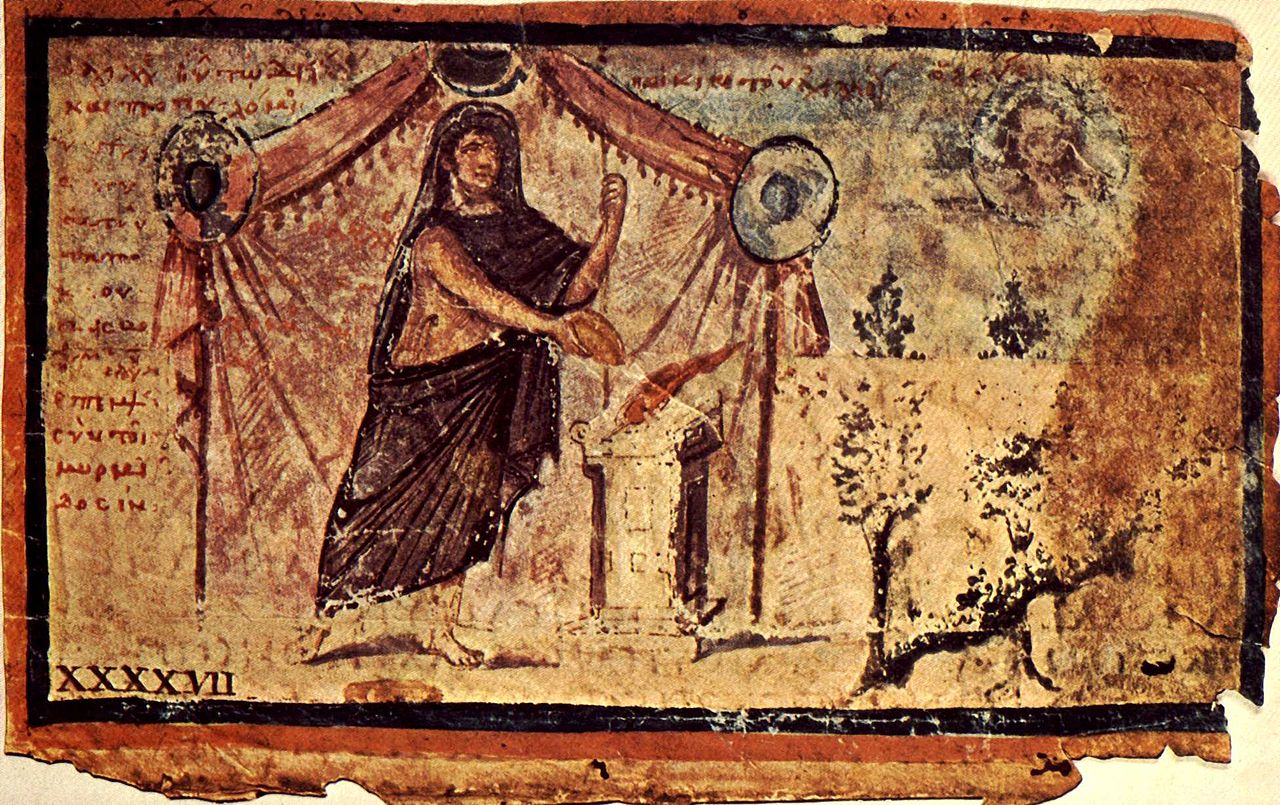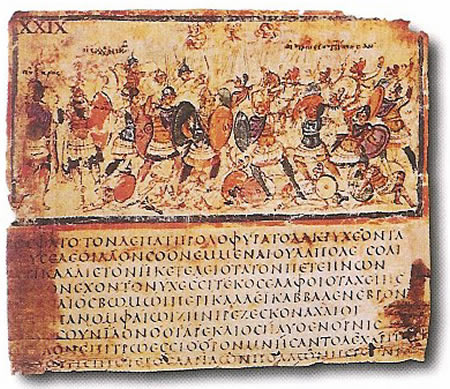
Achilles sacrificing to Zeus, Ambrosian Iliad, folios XXXXVII
The Ambrosian Iliad. This mysterious, illuminated manuscript circa 500 AD is an object of interest to many scholars, but also to art history lovers. Held today in the Biblioteca Ambrosiana in Milan, Italy, the Ambrosian Iliad is a real treasure, not only for historians and art historians, but also for every true art lover who appreciates the rare and the beautiful.
The Unique Set of Ancient Illustrations
The Ambrosian Iliad is definitely unique. The manuscript is written on vellum, one of the two most famous writing materials (the other one is, of course, papyrus). It contains both the text of Homer’s work and the only set of ancient illustrations that depict scenes from the Iliad. As such, the Ambrosian Iliad, or, otherwise named, the Ilias Picta has great artistic value. It’s a monument to the art of late antiquity and early Middle Ages, with its specific way of art expression. Many scholars assume the author (one or more, it can’t be confirmed with certainty) used firstly only pen and pencil to create a composition and then completed the whole illustration.
Color Harmony for Tough Effects
The illustrations of the Ambrosian Iliad are also a precious example of the art in the era of transition – from the classical Roman art to more simple, Medieval art. Therefore, the characters depicted here are more simple and stylized, although they still had the characteristics of classical Roman art. All the lovers of the ancient illustrations won’t miss the colors. The artists used them to create drama, in their own specific way. Naturalistic and more artificial colors are both present in the scenes from the Trojan War, but they don’t clash. They rather exist in a sort of harmony. Blue and purple gods and heroes on a more naturalistic background perfectly follow the suspense of the ancient poem, creating a tough dramatic effect.

A Gem for Collectors Throughout History
Therefore, it’s completely understandable why this manuscript was a subject of interest throughout history. The origins of this manuscript are still the subject of many debates. Regarding the composition, there are plenty of scholars who believe the manuscript was created in Alexandria, but some of them try to prove its provenance is from Rome or Southern Italy. Still, no one says with certainty from where this manuscript comes. The earliest history confirmed of this manuscript is from the 16th century when it was in the ownership of Gian Vincenzo Pinelli, a Genoese art collector. He held it in his library in Padua. After Pinelli’s death, it was taken to Naples where it was sold to Cardinal Federico Borromeo, the founder of Milan’s Ambrosian Library. It remains in Naples today.
‘Bleeding’ Miniatures Today
Today, an observer can notice dark red stains on the vellum, similar to blood. Maybe that could evoke the images of bloody battles from the bygone eras, but that isn’t actually true. In the early 1800s the librarian of the Ambrosiana, Cardinal Angelo Mai, was convinced in the philological value of the text and considered it was from the 3rd century. Therefore, to improve the legibility of the text, he treated it with harsh chemicals. The miniatures started to “bleed” and they are still “bleeding” today, giving this work of art a dose of mystery that intrigues people into wanting to find out more about the story of “The Ambrosian Iliad.”
2 thoughts on “Trojan War from Biblioteca Ambrosiana: The Secret of the ‘Bleeding Iliad’”